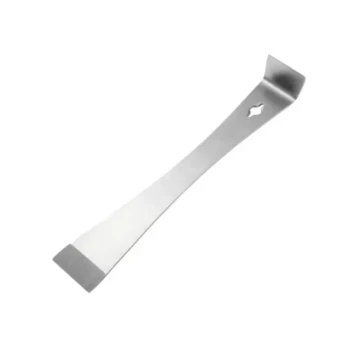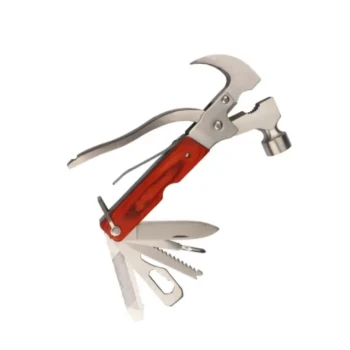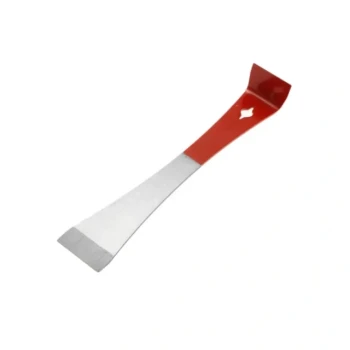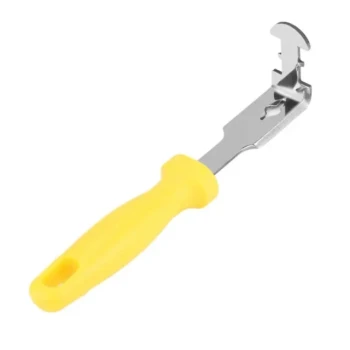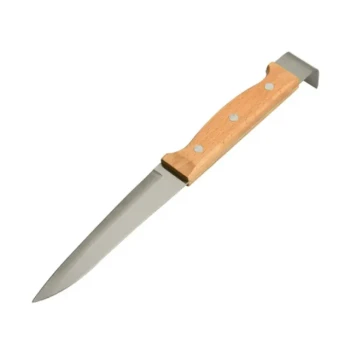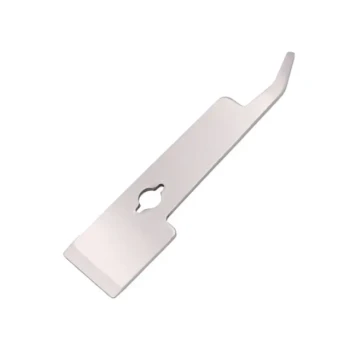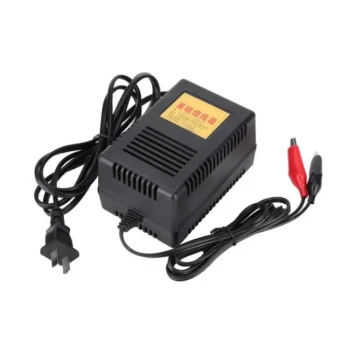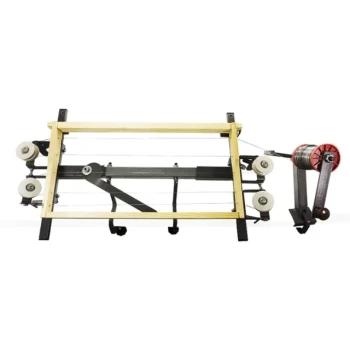For optimal performance and longevity, your hive tool requires a simple but consistent maintenance routine. The essential steps are to scrape off all propolis and wax immediately after use, wash it with warm soapy water, and then dry it completely before storage.
The core principle of hive tool maintenance is not just about cleanliness, but about ensuring the tool remains effective, safe, and does not become a vehicle for transmitting disease between your hives.

The Core Cleaning Protocol
Proper cleaning is the foundation of hive tool maintenance. A clean tool is easier to handle, more effective at its job, and lasts significantly longer.
Step 1: Immediate Scraping
After every hive inspection, use the edge of the tool to scrape off any large pieces of wax or propolis. Removing this debris while it's still fresh is far easier than trying to remove it once it has hardened.
Step 2: Washing and Rinsing
Wash the tool with warm, soapy water. This simple step effectively removes any residual honey, which can cause stickiness and attract pests to your storage area.
Step 3: Dealing with Propolis
For stubborn, sticky propolis (often called "bee glue"), rubbing alcohol is highly effective. Apply it with a cloth to dissolve the residue that soap and water cannot remove.
Step 4: Thorough Drying
This final step is critical. Drying your tool completely before storing it prevents rust from forming, which is the primary factor that will degrade the tool and shorten its lifespan.
Common Pitfalls and Practical Realities
Beyond the cleaning process, there are practical considerations that every beekeeper faces regarding their tools.
The Most Common Problem: The Lost Tool
A surprising but frequent issue is simply losing the hive tool. Beekeepers often set them down in the grass or on a hive body and forget them. Developing a habit of always returning the tool to a specific pocket or tool belt can save significant frustration.
Handling Sharpened Tools with Care
Some beekeepers sharpen the edges of their hive tools to make them more effective for certain tasks, like cutting out burr comb or even severing small vines. If your tool is sharpened, it requires extra care in handling and storage to prevent injury.
The Risk of Disease Transmission
While a simple cleaning is good for the tool, it's also a fundamental part of apiary biosecurity. A dirty hive tool can potentially transfer pathogens like foulbrood spores from a sick hive to a healthy one. Regular sterilization, especially if you suspect disease, is a best practice.
A Regimen for Your Beekeeping Goal
Your approach to maintenance should align with the scale and health of your operation.
- If your primary focus is hobby beekeeping: A thorough scrape, wash, and dry after each apiary visit is perfectly sufficient to keep your tool in excellent condition.
- If you are managing multiple apiaries or are concerned about disease: Add a sterilization step, such as wiping with rubbing alcohol or a quick scorch with a blowtorch, between inspecting different hives.
- If your primary focus is efficiency: Cultivate the habit of never setting your tool down. Always return it to your pocket or a magnetic holder to prevent the time lost searching for it.
Consistent care for your hive tool is a small investment that pays dividends in functionality and the overall health of your bees.
Summary Table:
| Maintenance Step | Key Action | Benefit |
|---|---|---|
| Immediate Scraping | Remove wax and propolis after use. | Prevents hardening and makes cleaning easier. |
| Washing | Clean with warm, soapy water. | Removes sticky honey residue and pests. |
| Dealing with Propolis | Use rubbing alcohol for stubborn glue. | Ensures a completely clean, non-sticky surface. |
| Thorough Drying | Dry completely before storage. | Prevents rust, the primary cause of tool degradation. |
| Sterilization (Optional) | Wipe with alcohol or scorch with a torch. | Critical for biosecurity and preventing disease spread between hives. |
Keep Your Apiary Running Smoothly with Professional-Grade Tools
Consistent hive tool maintenance is a small but critical part of successful beekeeping. For commercial apiaries and equipment distributors, using durable, high-quality tools makes this routine even more effective.
HONESTBEE supplies beekeeping professionals with the reliable equipment needed for efficient and healthy hive management. Our wholesale-focused operations ensure you get the durable hive tools and supplies your business depends on.
Contact HONESTBEE today to discuss your wholesale needs and ensure your apiary is equipped for success.
Visual Guide
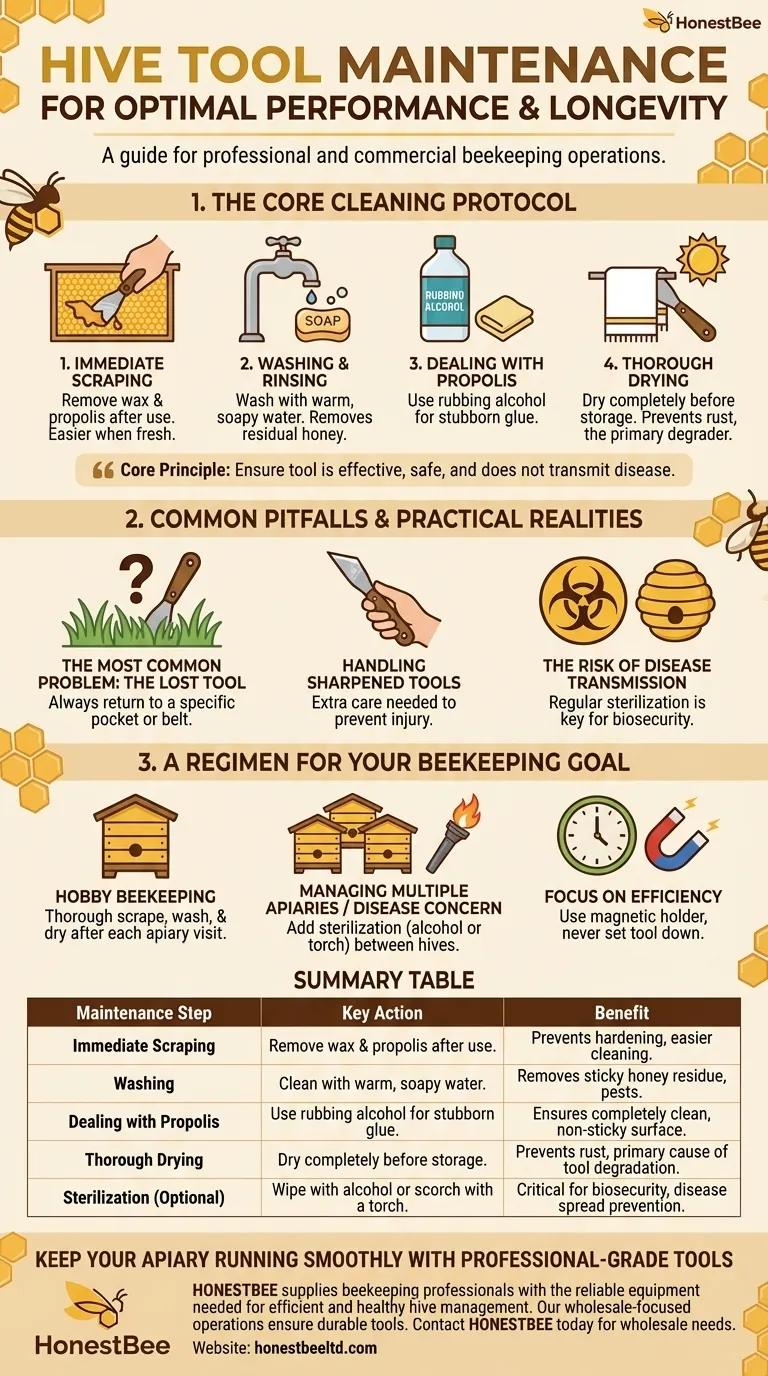
Related Products
- HONESTBEE Premium Italian Style Hive Tool with Hardwood Handle
- HONESTBEE Advanced Ergonomic Stainless Steel Hive Tool for Beekeeping
- HONESTBEE Professional Long Handled Hive Tool with Precision Cutting Blade
- Professional Dual-End Stainless Steel Hive Tool for Beekeeping
- Professional Multi-Function Stainless Steel Hive Tool
People Also Ask
- Is it advisable to manage a large number of hives alone? The Risks of Solo Beekeeping at Scale
- What are some common uses of a hive tool? Essential Multi-Purpose Tool for Every Beekeeper
- What is required for regular inspections in both Flow Hives and Langstroth hives? Essential Beekeeping Tasks Explained
- How should beekeepers handle bees when using a hive tool? Master Calm, Deliberate Techniques
- What are the basic tools for beekeeping? Essential Starter Kit for Safe & Successful Hive Management





